Last updated on February 15th, 2024
Our Solar system is vast and consists of many planets, moons, comets, asteroids, minor planets; and dust and gas. The main idea of our solar system was proposed by Nicolaus Copernicus (1473-1543) and he also proposed that the Sun is at the center of the universe while the planets revolved around it in circular orbits. Mars is the second smallest planet in the solar system after Mercury. It is the fourth planet from the sun. Mars was formed 4.5 billion years ago, by gravity pulling gas and dust together. Similar to Earth, it has a central core, a rocky mantle, and a solid crust.
Interesting Facts About Mars
“Sunsets on Mars are blue.”
1. Mars is also referred to as the “Red Planet” because it has high content of iron oxide which makes it appear reddish. However, gold, brown, tan, and green can also be seen on the surface as other minerals are also present.
2. Mars’ dense core is made of iron, nickel, and sulphur. Elements present in its rocky mantle include iron, magnesium, aluminium, calcium, and potassium.
3. Due to its red colour, Mars was named after the Roman god of war Mars (known as Ares by the Greeks).
4. Mars has a thin atmosphere.
5. Mars was mentioned by Egyptian astronomers in 2,000 BC, and was first seen through a telescope by Galileo Galilei in 1610.
6. Mars has only two moons as compared to Uranus’ twenty-seven. They are named: Phobos and Deimos. These moons are small and are irregularly shaped.
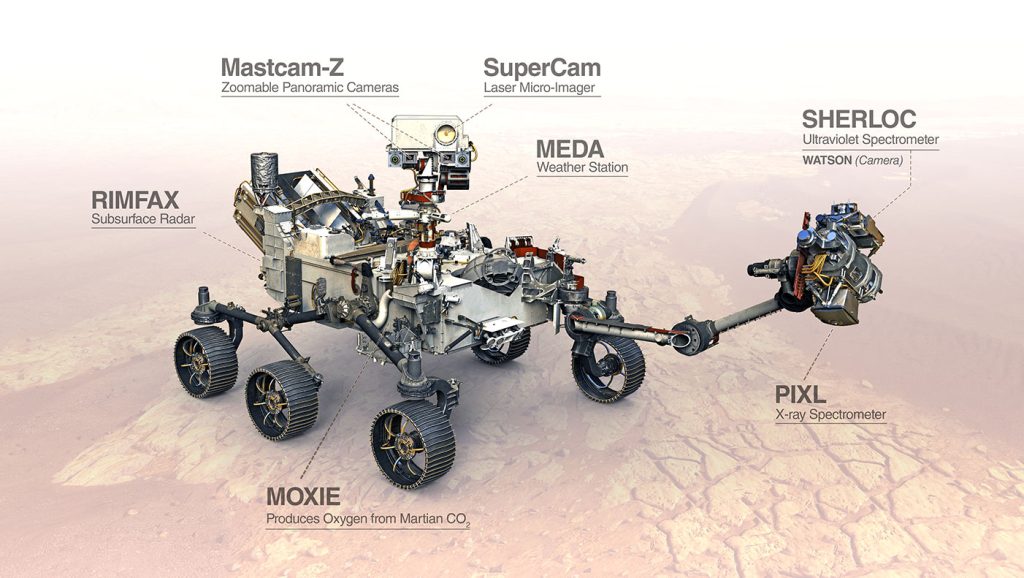
7. The composition of the core of Mars is not yet known to scientists and the exploration work is going on. It is not certain as of now if the planet’s core is solid, liquid or is built of two different layers. The maximum pressure of Mar’s core is expected to be 400,000 times the pressure of Earth’s atmosphere at sea level.
8. If we compare the density of Mars with that of the Earth’s, we would find that it is 100 times less dense than Earth.
9. Mars has low atmospheric pressure on its surface which is the reason why liquid water cannot exist on its surface for long.
10. Mars takes twice the time Earth takes to complete a full revolution around the sun.
11. Did you know that the giant Jupiter has the ability to influence the orbit of Mars? Due to its immense mass, Jupiter brings some change in Mars’ orbit.
12. The minimum distance between Mars and Earth keeps on changing because they do not have perfectly circular orbits. Instead, they have elliptical orbits. On the other hand, Venus has the most circular orbit of any planet in the solar system.
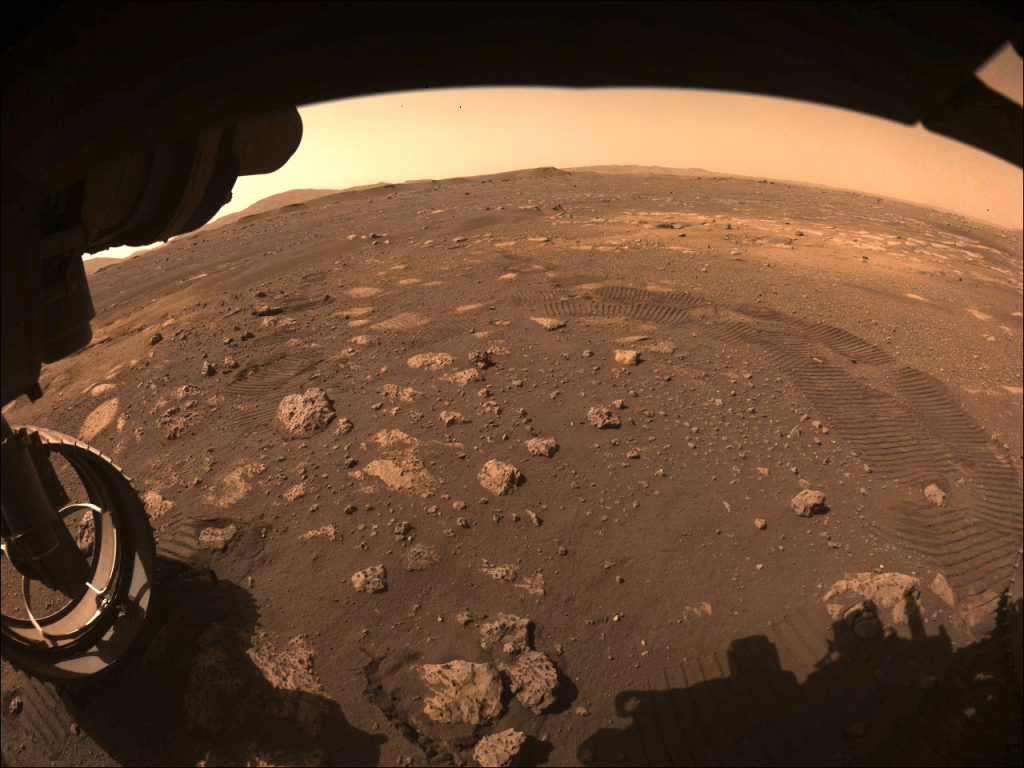
13. The International Astronomical Union (IAU), which is the international authority for assigning designations to celestial bodies, officially recognized the name “Mars” in its Resolution No. 10, which was approved by the XVIth General Assembly of the IAU in 1976.
14. Mars is 1.5 astronomical units away from the Sun, that is, 1.5 times the distance between the Sun and the Earth.
15. It takes Mars slightly less than 2 Earth years to orbit around the Sun (687 Earth days), and 24.6 hours to rotate on its axis. A Martian day is called a “sol”, which is short for “solar day”.
16. Mars’ orbit around the Sun is not a perfect circle, but an ellipse. Mars has the second largest orbital eccentricity in the Solar System (0.094), following Mercury (0.206).
17. Mars has all four seasons as that of Earth. However, each season on the Red Planet lasts twice as long as that on Earth.
18. Mars has distinct seasons throughout its year. This is because its equator is tilted 25 degrees with respect to its path around the Sun (orbital plane), which is very similar to Earth’s (average 23.4 degrees).
19. Mars’ seasons are not equally distributed along its year. This is due to the nature of its orbit around the Sun, which is not a circle but an ellipse. Spring in the northern hemisphere (autumn in the southern hemisphere) is the longest season, lasting 194 sols (Mars days), and autumn in the northern hemisphere (spring in the southern hemisphere) is the shortest one, lasting 142 sols.
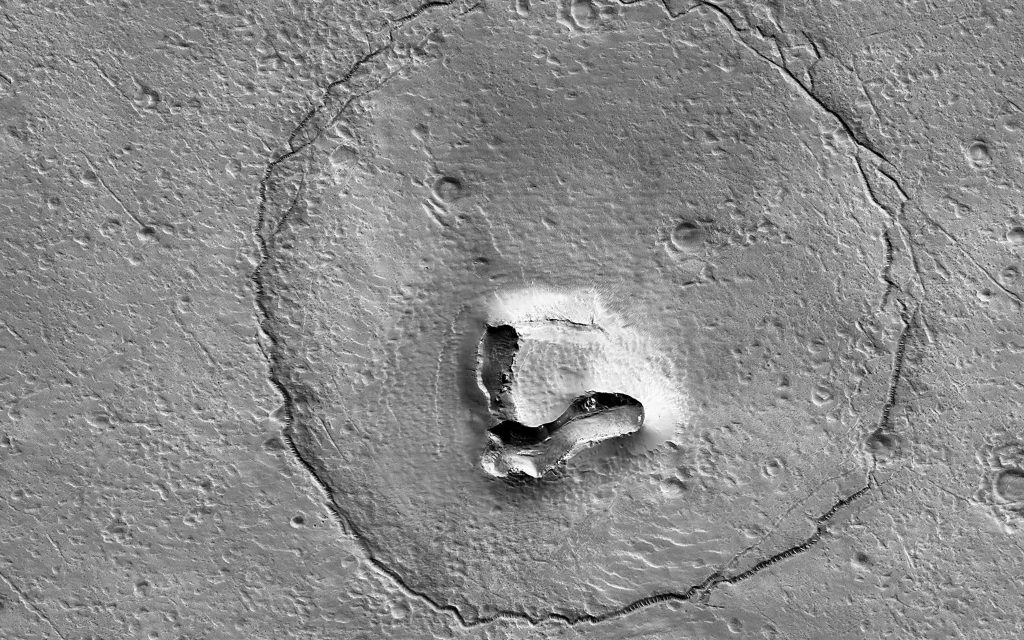
20. Mars’ distance from Earth, and distinct colour, make it easily identifiable by the naked eye. It looks like a red dot in the night sky.
21. Gravity on Mars is weaker than that on Earth, but double than that on the Moon (on the surface Mars= 3.7 N/kg, Earth= 9.8 N/kg, Moon= 1.6 N/kg).
22. Although Mars’ surface currently looks like a cold desert, it used to be warm and covered in water.
23. Due to some topographical traits, the presence of certain minerals, and the composition of its atmosphere, it is thought that Mars was covered in water 3.5 billion years ago. Today’s thin atmosphere means that water can’t persist as a liquid, so it can only be found as vapour or in the form of ice in the planet’s poles and under its surface.
“Olympus Mons — the tallest mountain in the solar system — is on Mars.”
24. “Opposition” is a situation when a planet and the Sun are on directly opposite sides of earth. In Mars opposition, Mars and the Sun are on directly opposite sides of the Earth. Also, learn the fact that the 2003 Opposition was the closest approach in almost 60,000 years! And as per calculations, this record will be broken in the year 2287.
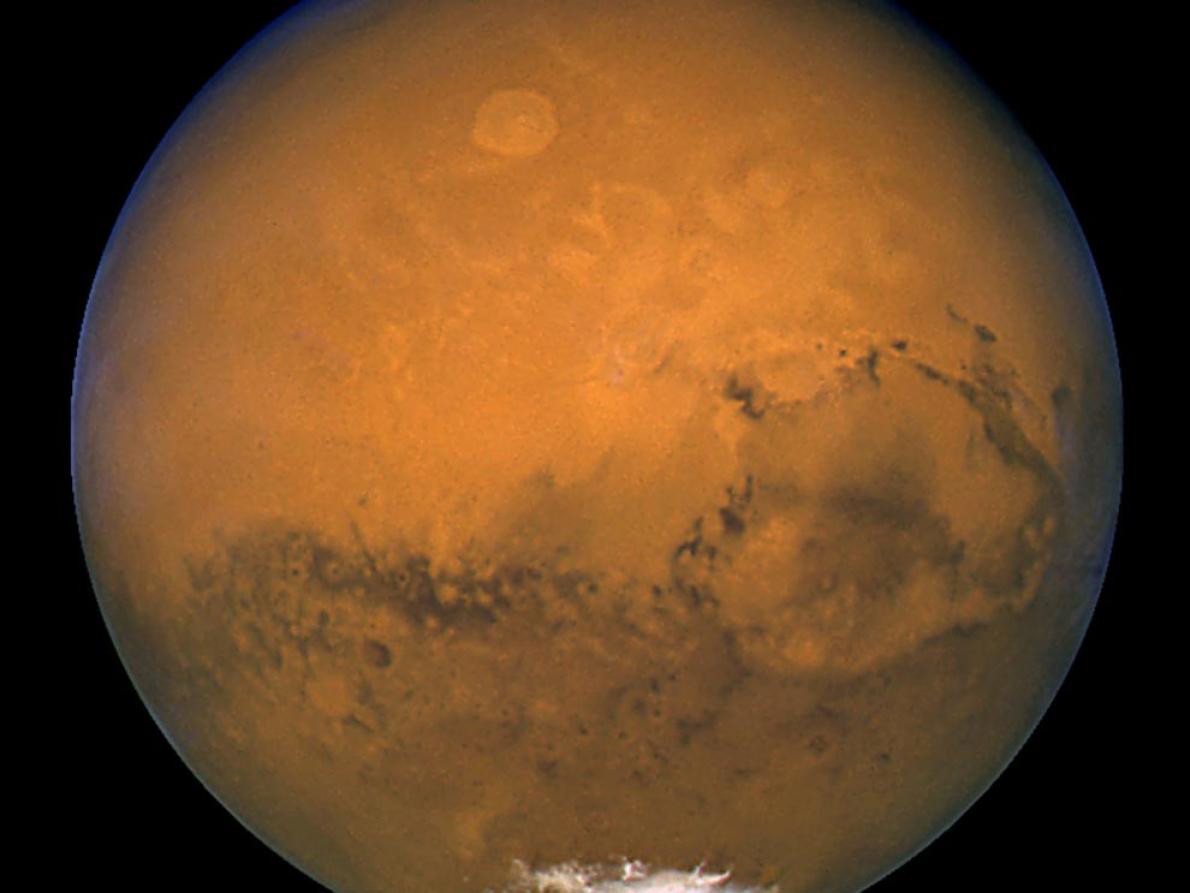
25. Mars has sufficient ice on its polar regions, which can be seen clearly in the image below. If the ice on its south pole melts, the resulting water will be sufficient to cover the planet’s entire surface to a depth of 11 meters. Mars, in addition to Earth, is the only other planet that has polar ice caps. It’s Northern cap is called – Planum Boreum, and Southern cap is called – Planum Australe.
26. Solar Conjunction is the term used to describe the coming of Sun between the Earth and Mars. When this happens, the communication between spacecraft on Mars, and the Earth drastically reduces.
27. Did you know that the ancient Babylonians first created the week and divided it into seven days? They named each day of the week upon the seven known bodies in the sky: the Sun, the Moon, Mars, Mercury, Venus, Jupiter, and Saturn. Hence, Tuesday is the day of Mars. Because of the red color of the planet, Mars is also associated with aggression.
28. The name of the month of March also derives from Mars.
29. The first interaction with Mars: Mariner 4, in 1965 was the first aircraft that flew by Mars. It took the spacecraft a whopping 228 days to reach the planet. Mariner 4 took 22 images of the planet.
30. Many Hollywood films have been produced with Mars as their subject including Flight to Mars – 1951, The Angry Red Planet – 1959 and the famous John Carter – 2012. See the full list here.
31. The tallest mountain in the Solar System – Olympus Mons – is on Mars. It is more than 21 km high (about three times taller than the Mt. Everest) and more than 600 km in diameter.
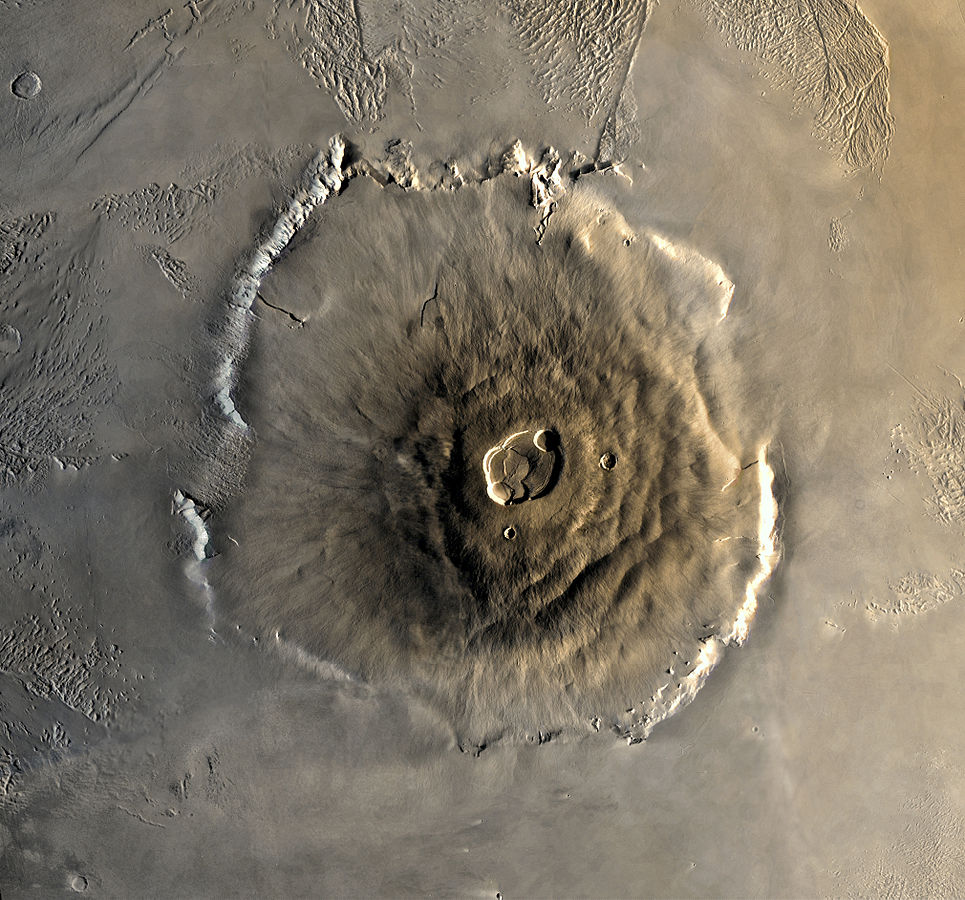
32. Indian Space Research Organization (ISRO) also set their orbiter for Mars safely on 24th September 2014. By doing so, India became the first country in the world to set a spacecraft into Mars’ orbit in its first attempt. The mission was launched on November 5th, 2013.
“Mars takes 687 Earth days to complete one revolution around the Sun.”
33. Scientists have had the chance to study the pieces of rocks from Mars that landed on Earth. The rock pieces orbited the solar system for millions of years and finally crash landed on the Earth.
34. 1960 – the first spacecraft on mission to Mars was launched. However, the mission failed.
35. Mars is at a distance of more than 142 million miles from the Sun.
36. Mars is a very cold planet. The average temperature on Mars stays around minus 80 degrees Fahrenheit – that’s below freezing point.
37. Due to the presence of red dust on the planet, which is mainly its iron content; mars sometime sees dust storms when the wind blows. These dust storms can be humongous and can cover the planet’s entire surface. Interestingly, these dust storms are sometimes visible by telescopes from the Earth. Wondering how fast winds in these storms move? Note that 60 miles per hour is the top speed of the winds blowing in some of the strongest Martian storms. Moreover, due to less atmospheric pressure on Mars than Earth, things get blown but the intensity is not that much as on earth with the same wind speed.
38. The surface gravity on Mars is only about 38% of the surface gravity on Earth, so if you weigh 100 pounds on Earth, you would weigh only 38 pounds on Mars.
39. Viking 1 and Viking 2 are the two spacecraft that were sent by NASA in 1975 on Mars with the objective to study its surface and to gather important information about its composition and structure. (Launch dates: August 20, 1975 (Viking 1); September 9, 1975 (Viking 2))
40. The first photograph of Mars taken from its surface was taken by Viking 1 on July 20 1976.
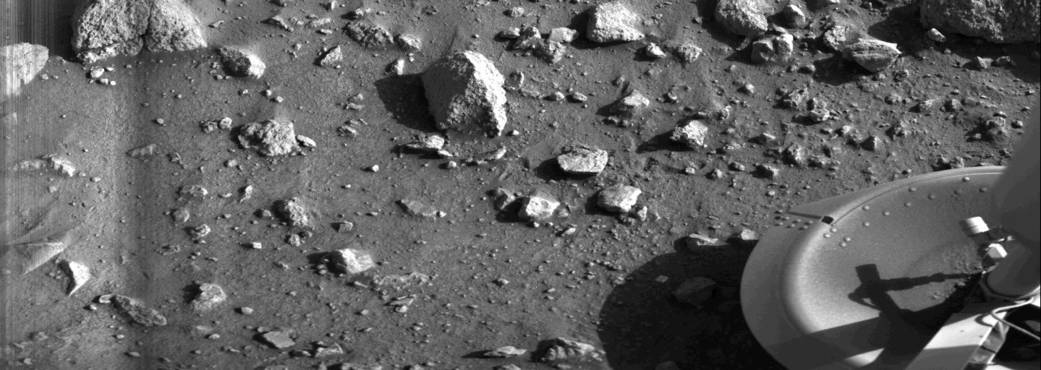
41. In 2004, NASA’s rovers found the evidence of water on the planet. Presence of water on Mars could be a potential signal of survival of living things in the past or in the present on the planet.
42. Currently, two rovers from NASA named, Opportunity and Curiosity, are exploring the surface of Mars.
43. “Perihelion” is the term for the point in the orbit of a planet, asteroid or comet at which it is closest to the Sun. Mars is at a distance of 206,655,215 kilometers or 1.381 AU when it is closest to the Sun. (An AU is an astronomical unit. In simple terms, 1 AU is the average distance between the Sun and Earth.)
44. “Aphelion” is the term for the point in the orbit of a planet, asteroid or comet at which it is furthest from the Sun. Mars is at a distance of 249,232,432 kilometers or 1.666 AU when it is furthest from the Sun. (An AU is an astronomical unit. In simple terms, 1 AU is the average distance between the Sun and Earth.)
45. NASA has plans to create an Earth Independent colony on Mars by the end of 2030.
46. Presence of Ozone on Mars was first detected in 1971. However, the concentration of Ozone on Mars is 300 thinner than on Earth, and it varies with time and location. At present, scientists have been successfully able to identify three distinct layers of Ozone on the Red Planet.
47. The amount of land surface available on Mars is almost equal to that available on the Earth.
48. The length of one day on Mars is almost identical to that of the Earth.
Duration/length of a day on different planets (Source)
| Planet | Length of Day |
|---|---|
| Mercury | 1408 hours |
| Venus | 5832 hours |
| Earth | 24 hours |
| Mars | 25 hours |
| Jupiter | 10 hours |
| Saturn | 11 hours |
| Uranus | 17 hours |
| Neptune | 16 hours |
49. Dust storms are quite violent on Mars. Dust storms can continue to rule the planet’s surface for months and are mostly generated when Mars comes in close proximity to the Sun.
50. One of Mars’ moons – Phobos – is expected to either crash into the planet or break up into a small ring around the planet in the next 50 million years or so.
51. The longest and the deepest canyon in the entire solar system is on Mars – “Valles Marineris”. Some key stats about it: maximum length – 4000 km, maximum width – 200 km, and maximum depth – 7 km. Compared to Grand Canyon, it is 4 times deeper and 6 times longer.
52. Mars is yet to see human feet unlike the moon where some astronauts including Neil Armstrong have landed decades ago.
53. The success rate of the missions that have been launched for the exploration of Mars is no better than 66%.
. . . continue reading facts about Mars on the next page
